How do we view success in corporate training? Is it the number of people who take the training? Is it the number of hours the training takes to complete? Is it the number of in-house naps employees take while looking over training material?
In all seriousness, the way many companies view the effectiveness of a training program has very little real basis in the program’s actual business impact. If that’s the case, those companies can’t measure the success of an effective training program with much accuracy.
Answer: Use an Effective Training Program That Captures Meaningful Statistics
The problem with traditional classroom or e-learning settings is you have test results, and that’s about where the data ends. You know how well an employee passed or failed a unit, but this doesn’t take into account how well the employee actually knows the material.
Anyone who’s done any post-secondary schooling (or even high school, for that matter) knows how surprisingly little knowledge can stick after cramming for an exam.
Sure, you can get a passing grade, but how much have you actually retained in the weeks and months afterwards?
Traditional teaching methods don’t take guesswork into account. A right answer on a multiple-choice test doesn’t necessarily prove a learner knows the answer; it just proves that they got lucky, or that the right answer looked slightly more plausible than the wrong ones.
There’s just no way of quantifying how confident learners were about their answers, right or wrong. With Adaptive Learning, confidence plays a larger part than in traditional e-learning.
We’ve all had moments on multiple-choice tests where we guessed the right answer out of pure luck. But since Adaptive Learning quizzes the learner on how confident they are in their answers, these blind spots are addressed. In short, Adaptive Learning offers a more accurate solution.
Adaptive Learning Keeps Track of Learner Progress and Confidence
By asking employees questions to keep track of their learning progress, Adaptive Learning creates data for quantifying learning success, in order to measure the business impact of a training program.
An employee can review their progress and see where their strengths and weaknesses lie.
Unconscious incompetence is a huge problem in the workforce, but utilizing Adaptive Learning techniques to review progress and strengthen weak points can help keep unconscious incompetence to a minimum - to levels traditional e-learning can’t match.
A Way to Measure Success in Corporate Education
One way success in corporate learning can be measured is by saved time. The Adaptive Learning method allows learners to get through training material faster. Also, the learning can be completed from anywhere with internet access (and once downloaded the course can still be completed offline), so Adaptive Learning takes less time than traditional e-learning.
Adaptive Learning creates data - quantifiable, reliable data - and, most importantly, it helps employees learn and retain the new knowledge (unlike those old days of exam cramming).
This relevant, helpful knowledge will help employees work productively, and help companies avoid lost productivity.
Is Your E-Learning Platform Working Exactly Like You Want It to?









